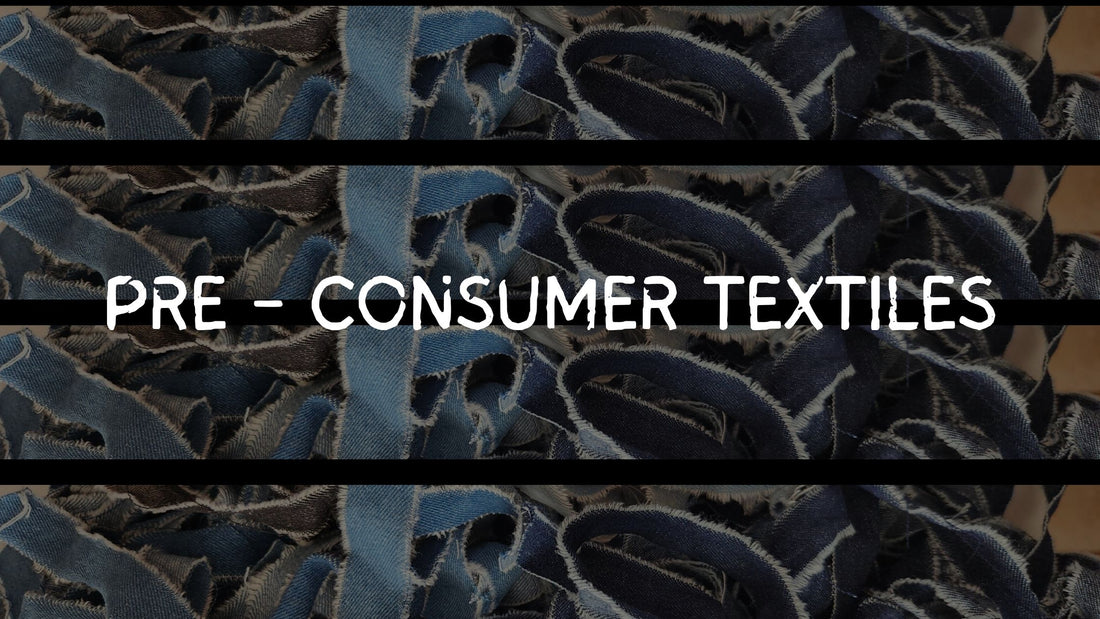
The Untapped Potential of Pre-Consumer Textile Waste Upcycling
Share

Introduction:
Hey everyone! As an intern at Bunko Junko, I’ve been diving deep into the world of sustainable fashion, and I’ve discovered something super exciting: pre-consumer textile waste. Now, when most people think of textile waste, they imagine old clothes and worn-out fabrics, but there’s a whole other side to it that’s often overlooked. Pre-consumer textile waste includes all those scraps, offcuts, and extra materials that get tossed aside during the manufacturing process before they ever reach a store. At Bunko Junko, we’re all about transforming these seemingly useless materials into something amazing. Let’s explore how upcycling pre-consumer textile waste can make a huge difference in the fashion world and the environment!
1. What is Pre-Consumer Textile Waste?
So, what exactly are we talking about when we say pre-consumer textile waste? Here’s the scoop:
- Fabric Scraps: Tiny pieces of fabric left over after cutting out patterns.
- Offcuts: Larger chunks of fabric trimmed away during production.
- Sample Wastes: Materials from sample runs or items that didn’t pass quality control.
- Excess Inventory: Fabrics or products that never get sold.
Even though these materials are brand new, they often get thrown away because they don’t fit perfectly into the design or production plan. The amount of waste this generates is pretty staggering!
2. Why Upcycle Pre-Consumer Textile Waste?
Upcycling these materials isn’t just good for the environment—it’s a game changer in a lot of ways:
Reduces Waste: By repurposing these materials, we keep them out of landfills, which helps tackle the massive problem of textile waste.
Conserves Resources: Using upcycled materials means we’re not using new raw materials, which saves water, energy, and reduces our carbon footprint.
Encourages Creativity: It’s like a creative challenge for designers to turn something that was discarded into a unique piece of fashion.
Supports Sustainability: Upcycling fits right into the circular economy model, where we keep products and materials in use for as long as possible.
3. How Bunko Junko Upcycles Pre-Consumer Textile Waste
Here’s how we at Bunko Junko get creative with pre-consumer textile waste:
- Sourcing Scraps: We team up with manufacturers to collect all those fabric scraps and offcuts that would otherwise be thrown away.
- Designing with Purpose:Our designers see these scraps as a treasure trove of possibilities. Each piece is carefully chosen and transformed into something new and beautiful.
- Creating Unique Products: From stylish patchwork blazers to colorful multi-fabric blouses, our creations showcase the beauty of upcycling. Each item has its own story and highlights the innovative use of materials that would otherwise be wasted.
4. The Environmental Impact of Upcycling Pre-Consumer Waste
The impact of upcycling pre-consumer textile waste is pretty impressive:
- Less Landfill Waste: By giving these materials a new life, we prevent tons of fabric from ending up in landfills.
- Reduced Carbon Footprint: Upcycling cuts down the need for new textiles, which lowers the energy and resources needed for fabric production.
- Water Conservation: Fabric production uses a lot of water. By repurposing existing materials, we help conserve this precious resource.
5. Challenges in Upcycling Pre-Consumer Waste
While upcycling is amazing, it does come with its challenges:
- Quality Control: Not all scraps are perfect for upcycling. We need to carefully sort and select high-quality materials.
- Design Limitations: Designers have to work with what’s available, which can be a creative puzzle but also sometimes limiting.
- Scalability: Upcycling on a large scale can be tricky due to the variability of materials and the labor-intensive process involved.
6. The Future of Pre-Consumer Textile Upcycling
The future of fashion is definitely leaning towards sustainability, and pre-consumer textile upcycling is a big part of that. As more brands and consumers embrace this practice, we can collectively make a huge impact. At Bunko Junko, we’re thrilled to be part of this movement, turning what was once considered waste into stylish, functional pieces that make a statement.
Conclusion:
Pre-consumer textile waste might seem like an overlooked resource, but it’s actually full of potential for upcycling. By transforming these materials into new products, we’re not just reducing waste—we’re also challenging the traditional fashion model and proving that sustainable fashion can be both beautiful and impactful. Join us at Bunko Junko as we continue to explore creative ways to turn waste into wearable art, one scrap at a time.
